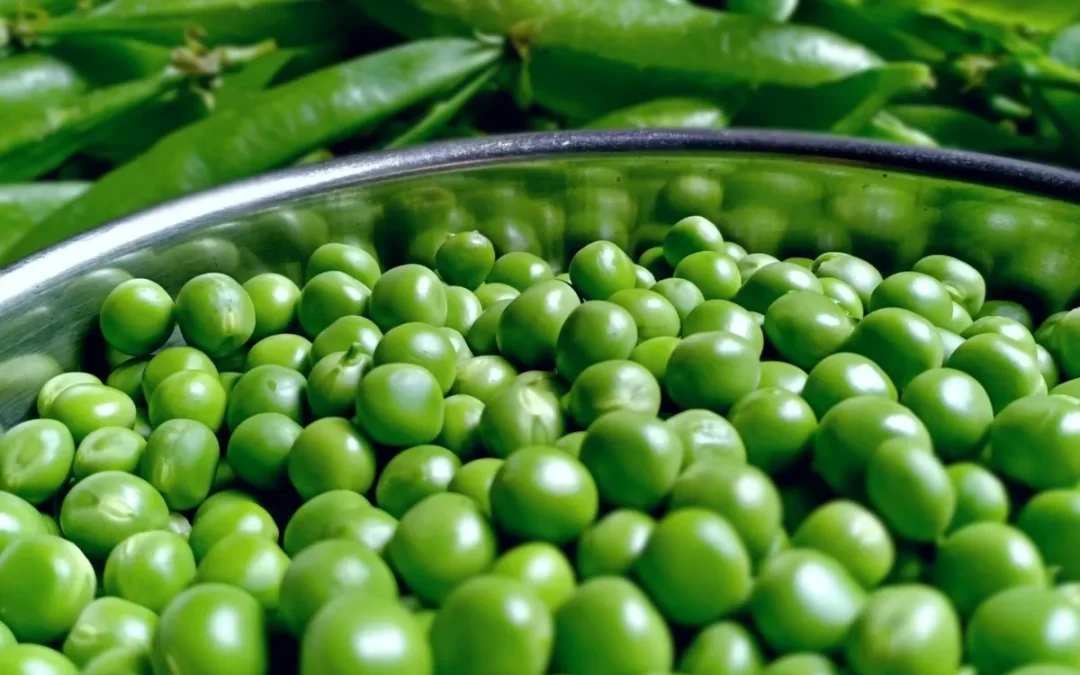PRICES for chickpeas have hit a high not seen since early 2020 as traders jostle for tonnage in the harvest now in full flight in Central Queensland.
The region will this year be the origin for most of Australia’s 2023-24 chickpeas, as dry conditions limit production in southern Qld and northern New South Wales.
In South Australia, lentil harvesting has started, and activity is expected to peak late this month.
Southern Australian’s faba beans are meeting steady export demand, mostly from Egypt, while beans in the north appear destined for the domestic stockfeed market when harvest gets going next month.
Trade in mungbeans has slowed to a trickle amid depleted current-crop stocks.
All prices quoted are in Australian dollars unless otherwise stated.
Chickpeas
Growers delivering CHKP1 chickpeas are hitting bids of $900 per tonne or more delivered CQ and Darling Downs depots, up from around $630/t in late August.
At least two cargoes of around 20,000t each are expected to be shipped from CQ by December, and the burgeoning container market is providing competition for product to be shipped out of Townsville and Brisbane.
CQ grower Ross Faint said his family’s chickpea harvest has just finished to deliver very good quality and an average yield of around 2.1t per hectare.
“We’ve seen $900/t…and it was $585/t back on August 8,” Mr Faint said.
Two traders have confirmed the delivered depot price has been at around $900/t, and growers are selling.
While ABARES on Sep 5 forecast Australia’s 2023-24 (Oct-Sep) chickpea crop at 533,000t, down from 544,000 forecast in June, traders are now expecting a crop of less than 500,000t.
“I feel the lion’s share will come from CQ, maybe 300,000t,” one trader said.
Dry conditions at planting severely limited area planted in northern NSW, and a lack of in-crop rain for many crops on the Western and Central Downs of southern Qld have limited yield potential.
While yields might be average at best, quality from the southern Qld crop is expected to be good, provided rain in coming weeks does not cause widespread staining.
As El Niño conditions assert themselves in Qld and central and northern NSW, this appears unlikely.
Traders report bulk shipments to Pakistan out of Brisbane over recent months have all but cleared on-farm stocks of CHKPM and CHKPX from the past two harvests.
CHKP1 prices are seen as prohibitively expensive for Pakistan, where chickpeas are primarily bought to split for chana dahl.
“Pakistan won’t buy at these levels,” one trader said.
While Bangladesh can import CHKP1-type product from India, it is not expected to in the near future, and will be looking to Australia.
“India won’t sell chickpeas to Bangladesh because they are short themselves.”
Faba beans
ABARES’ forecast for new-crop faba beans at 447,229t looks achievable, with production centred in southern Australia, where the season has largely been favourable to date.
Any tonnage out of Qld and northern NSW is expected to be consumed domestically in mixes for sheep and dairy and beef cattle.
On old-crop, a 9500t bulk parcel from Esperance in Western Australia has been added to a part cargo loaded in Adelaide, and is on its way to Egypt.
This is believed to be a first for the state, and has formed part of the last cargo to sail in the 2022-23 shipping year.
Prices for fabas have risen around $50/t in the past six weeks to reflect rising domestic demand as opportunity feeding of sheep and lambs at bargain prices ramps up.
Clear Grain Exchange on Friday reported a trade of $475/t in South Australia’s South East, but the market is expected to soften when southern Australia’s harvest starts in coming weeks.
While northern NSW and southern Qld have some decent faba crops not far from harvest, one trader said volume offered in the cash market over coming weeks will be minimal.
“Farmers are not selling new crop; they are too busy doing other things.”
That can be harvesting chickpeas, barley, wheat and canola, or cutting crops for hay if their fodder value outweighs their grain value.
Traders are expecting the faba market to fall to around $400/t delivered port, or export parity, once fabas in Victoria, SA, and southern NSW hit the market.
However, if pasture conditions deteriorate across south-eastern Australia, domestic demand is expected to keep the market at well above those levels as export demand from Asia to the Middle East focuses on new-crop from the Baltic States, the UK, and eastern Europe.
Crop conditions for faba beans vary from excellent to poor, depending on time of planting, in-crop rain and subsoil moisture.
Lentils
Harvesting of lentils started mid-September in South Australia, and truckloads are already into container-packing and bulk sites as SA’s major handler Viterra this week issued its first weekly harvest report for the season.
Prices are holding up at around $1000/t delivered port, up by more than $100/t since late August.
Downside in current values is hard to see, based on export competitor Canada’s drought-reduced crop, and also diplomatic ructions
As reported by Reuters and others, Canadian lentil sales to India have slowed since Canadian Prime Minister Justin Trudeau said he suspected Indian involvement in the murder in British Columbia of a Sikh separatist.
ABARES last month estimated Australia’s 2023-24 lentil crop at 1.2 million tonnes, generally in line with trade estimates.
SA’s Yorke Peninsula and Vic’s Wimmera are Australia’s two major lentil-growing regions, and both have generally enjoyed a favourable growing season, with average or better yields in sight.
Harvest on YP is expected to start by late October, and will be largely a November affair in the Wimmera.
Yields on the Upper Eyre Peninsula, Vic Mallee and SA Murray-Mallee may be below average based on low in-crop rain, and some frost damage.
Mungbeans
Nominal prices remain at around $1250/t for new-crop No. 1 grade mungbeans, $1150/t for processing and $1050/t for manufacturing, based mostly on continuing buoyant demand from China.
Myanmar’s monsoon crop is now being harvested, and its winter crop will be harvested from February to April, the same time as Australia’s summer-planted crop.
Production prospects for mungbeans in Australia generally are subdued due to dry conditions in CQ, southern Qld and northern NSW, and the likelihood that cotton will be planted on irrigated country provided enough stored water is on hand.
Fuente: graincentral

